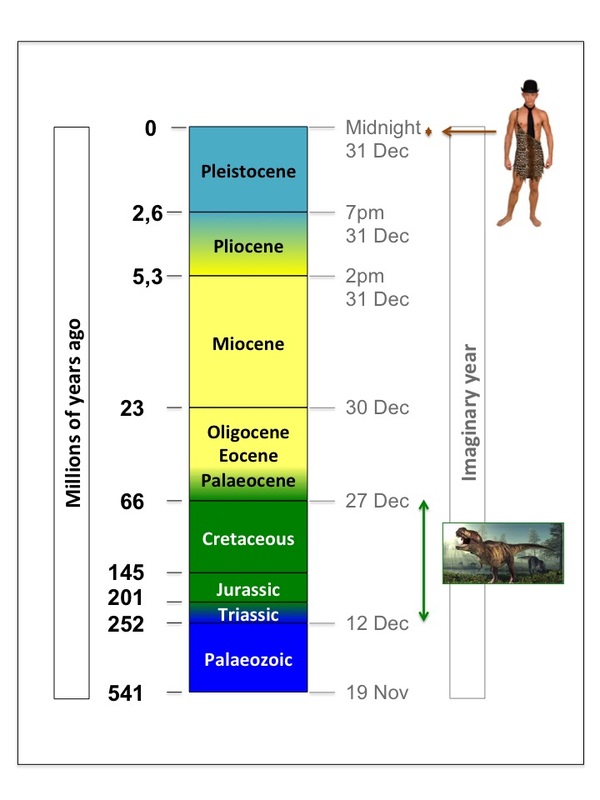Background
geological time
|
,The Earth was formed a long time ago; a very long time ago - between 4,500 and 4,600 million years ago to be somewhat imprecise. And there is evidence that its basic layered nature - Crust, Mantle, Core - was established early on in its history, around 4,400 million years ago.
Time of this magnitude is hard to get your head around, but one classic way of illustrating its immensity is to imagine the life of the planet as a calendar year. Consider that the Earth formed on the 1st January, and today we are standing at midnight on the 31st December. Just one day on this scale represents 12,5 million actual years! The very earliest forms of life - primitive bacteria - had developed by the last week in March in our imaginary year, but the first land animals took until nearly the end of November to emerge! The first dinosaurs appeared on the 12th December (around 250 million years ago), and then became extinct 185 million years later, on the 27th December (!), following a massive meteorite impact that hit the modern day Yucatan peninsula in Mexico. The dinosaurs' extinction opened the way for land mammals to proliferate, including sabre-tooth tigers, mammoths and, briefly, the largest land mammal ever - the Paraceratherium - a rhinocerous-looking beast, about four times as big as a modern-day elephant. 'Man' showed up late to this mammalian party with what is thought to be the first species of the genus Homo (Homo habilis) emerging around 2,8 million years ago. However, anatomically modern man, Homo sapiens, didn't evolve until around 200,000 years ago by which time it was already 23 minutes to midnight on the 31st December. Christ was around 14 seconds before midnight! and just for the record, I was born 0,4 seconds before midnight (phew!). Geologists have divided this immense time span into broad units called 'Eons' - for example the 'Phanerozoic' which you probably haven't heard of; these are then divided into 'Eras' - for example the 'Mesozoic' which you may have heard of; then into 'Periods' - for example the 'Jurassic' which you've definitely heard of (!); then into 'Epochs' such as the 'Pleistocene' which you may have heard associated with the "Ice Age"; and finally into 'Ages' which are however nothing to do with the Ice Age! Luckily, you don't have to worry about any of this. For simplicity, our story of the geology of southern Spain is going to start around 500 million years ago in an Era called the Palaeozoic. The time scale we will be using is shown opposite. For the sake of clarity, I have shown only a selection of Era, Period and Epoch names relevant to this story and those probably most familiar to the reader; plotted the time scale logarithmically; and colour-coded the timescale according to the story chapters to follow. Also, for brevity, the phrase "millions of years ago" is often abbreviated throughout as 'my'. Next: The geological story of southern Spain - Preface |

